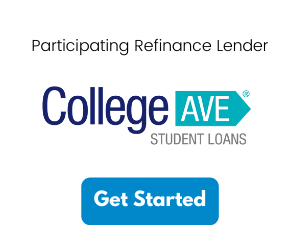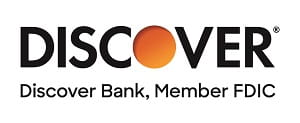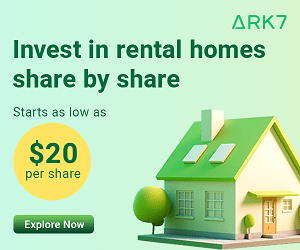If you are a veteran, transitioning from military service to civilian life can be a big adjustment. Education can play an important role in this process, offering not only career opportunities but also a means of personal growth and development. Getting a college degree or professional certification can open doors to stable, well-paying jobs and help you integrate more seamlessly into your community.
Various programs are designed to assist veterans in covering the costs associated with higher education, including the GI Bill, which provides significant financial support for tuition, books, and housing. Beyond this, there are federal student loans and grants. Being aware of these resources can help the financial burden of college and make the pursuit of education more accessible and less stressful. Understanding your options is the first step toward making informed decisions about financing your education.
Specific Programs and Resources for Veterans
There are various financial aid programs available to veterans looking to go to college after serving in the military. Below are some specific programs and resources designed to support you in your pursuit of higher education.
The GI Bill Benefits and How to Use Them
The GI Bill is one of the most significant and well-known education benefits available to veterans. The Post-9/11 GI Bill (Chapter 33) offers substantial financial support, covering up to 100% of tuition and fees for in-state public institution for qualified veterans. . It also provides a monthly housing allowance, a stipend for books and supplies, and even the option to transfer unused benefits to eligible family members.
To utilize GI Bill benefits, veterans need to apply through the U.S. Department of Veterans Affairs (VA). The process involves filling out the VA Form 22-1990, which can be done online through the VA's website or by mail. Once approved, veterans should provide their Certificate of Eligibility (COE) to their school's certifying official to start receiving benefits.
Other Veteran-Specific Financial Aid Programs
Apart from the GI Bill, there are other financial aid options specifically tailored for veterans:
- Yellow Ribbon Program: This program works in conjunction with the Post-9/11 GI Bill to cover tuition and fees that exceed the highest public in-state tuition rate. Participating institutions voluntarily enter into an agreement with the VA to fund uncovered costs, which the VA then matches.
- Veterans Educational Assistance Program (VEAP): This program allows eligible service members to make contributions from their military pay to their VEAP account, which the government will match on a 2-for-1 basis to help pay for education and training.
- Tuition Assistance Programs: Many branches of the military offer tuition assistance to active-duty service members. These programs can cover a significant portion of tuition costs for courses taken during active duty.
Resources for Further Assistance
Before you get overwhelmed with all the options available, know there are numerous resources available to help veterans:
- VA Education and Training Services: The VA provides comprehensive support for veterans seeking educational opportunities. Their website offers detailed information on benefits, applications, and additional resources.
- School Certifying Officials: Many colleges and universities have dedicated officials who specialize in assisting veterans with their benefits. These officials can help with paperwork, understanding benefits, and ensuring timely processing.
- Veterans Service Organizations (VSOs): Organizations such as the American Legion, Veterans of Foreign Wars (VFW), and Student Veterans of America (SVA) offer guidance and support to veterans navigating the educational benefits system.
Student Loans Available for Veterans
When it comes to financing your education, veterans have access to various student loan options to supplement their GI Bill benefits and other veteran-specific aid programs. Below are the types of student loans available to veterans:
Federal Student Loans
Direct Subsidized Loans: These loans are available to undergraduate students with demonstrated financial need. The key benefit of Direct Subsidized Loans is that the U.S. Department of Education pays the interest while the borrower is in school at least half-time, during the grace period, and during deferment periods.
Direct Unsubsidized Loans: Unlike subsidized loans, Direct Unsubsidized Loans are available to both undergraduate and graduate students and do not require financial need. Interest will accrue from the time the loan is disbursed until it is paid in full.
Direct PLUS Loans: These loans are available to graduate or professional students and parents of dependent undergraduate students. They require a credit check, and the borrower can request to borrow up to the cost of attendance minus any other financial aid received. Direct PLUS Loans can be useful for covering remaining educational expenses that other financial aid does not.
Private Student Loans
Private student loans are offered by private lenders such as banks, credit unions, and state-based or state-affiliated organizations. They can help veterans cover any additional educational costs not covered by your veterans benefits, scholarships, grants or federal loans. Private loans typically require a credit check, and interest rates can vary based on the borrower’s creditworthiness. Unlike federal loans, private loans may not offer the same benefits in terms of loan forgiveness, income-driven repayment plans, or deferment options, and as such should be your last resort when paying for college.
Differences Between Federal and Private Loans
Understanding the differences between federal and private student loans is essential for veterans when choosing the best option for their educational financing needs:
- Interest Rates: Federal student loans offer fixed interest rates, whereas private loans may have variable or higher fixed rates depending on the borrower's credit history.
- Repayment Flexibility: Federal loans offer a variety of repayment plans, including income-driven repayment options, which can adjust based on the borrower's income and family size. Private loans may not offer this flexibility and have more rigid repayment terms.
- Deferment and Forbearance Options: Federal loans provide deferment and forbearance options for borrowers facing financial hardships. Private loans may not offer the same degree of leniency.
- Loan Forgiveness Programs: Federal loans may be eligible for forgiveness programs, such as Public Service Loan Forgiveness (PSLF) or Teacher Loan Forgiveness. Private loans do not typically offer loan forgiveness options.
- Subsidized Interest: Federal Direct Subsidized Loans do not accrue interest during certain periods, reducing the overall cost for the borrower. Private loans generally accrue interest continuously.
By evaluating these differences, you can make an informed decision about which loan types are best suited for you financial needs and educational goals.









